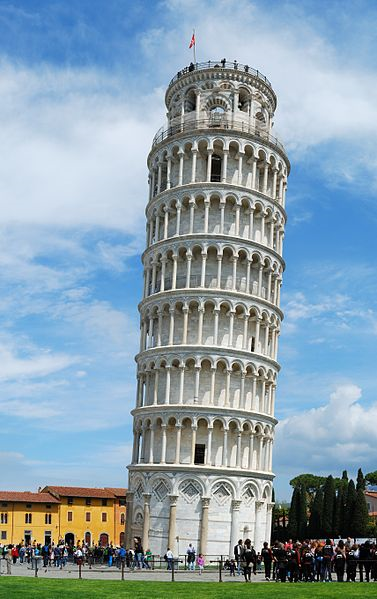
Linear functions, summary of features
You will have covered the concepts here before, either in previous years or even this year. But I'll summaries the key features of linear equations below so that you have a handy reference point all in one place.
Slope or Gradient
The gradient of a line (also called the slope) that passes through two known points, say $\left(x_1,y_1\right)$(x1,y1) and $\left(x_2,y_2\right)$(x2,y2) on the cartesian plane can be found easily. Gradient is a measure of steepness. It is the ratio of a line's rising (or falling) to its running.
If, over a distance of $8$8 metres, a driveway rises $2$2 metres, then its gradient is said to be the ratio $\frac{2}{8}=\frac{1}{4}=0.25$28=14=0.25. It is also defined as the tangent of the angle of rise as shown in this simple diagram.

Consider the following example of a line passing through two points
$\left(-3,7\right)$(−3,7) and $\left(5,9\right)$(5,9) as shown here:

Looking at the two $y$y values of the two points, the rise is clearly $2$2. We could either use a formula for rise which might look like $Rise=y_2-y_1=9-7=2$Rise=y2−y1=9−7=2 or simply notice that there is a gap of $2$2 between the two values.
Looking at the two $x$x values we could again either use the formula $Run=x_2-x_1=5-\left(-3\right)=8$Run=x2−x1=5−(−3)=8 or simply notice that the gap between $-3$−3 and $5$5 is $8$8.
We also realise that the line is rising and this means that the gradient is positive.
The gradient, often denoted by the letter $m$m is simply the ratio given by:
$m=\frac{y_2-y_1}{x_2-x_1}=\frac{2}{8}=0.25$m=y2−y1x2−x1=28=0.25
From the fact that $\tan\theta=0.25$tanθ=0.25 we can use a scientific calculator to show that $\theta=\tan^{-1}\left(0.25\right)=14^\circ2'$θ=tan−1(0.25)=14°2′, which gives some sense to the steepness of the rise.
Note that if the line is falling, the line's gradient will be negative. In such cases the acute angle the line makes with the $x$x axis will be shown on the calculator as a negative angle. Adding $180^\circ$180° to this will reveal the obtuse angle of inclination the line makes with the axis.
For example if the gradient was given by $m=-0.25$m=−0.25, then $\theta=180^\circ+\tan^{-1}\left(-0.25\right)$θ=180°+tan−1(−0.25), which simplifies to $\theta=165^\circ58'$θ=165°58′.
Suppose we consider the line given by $5x-2y=20$5x−2y=20. By putting $x=0$x=0 we see that $y=-10$y=−10 (note the negative sign here). Also, by putting $y=0$y=0, we find that $x=4$x=4. This means that the $x$x and $y$y intercepts are $4$4 and $-10$−10 respectively. The situation is shown here:

Note that the rise and run can be determined from the $x$x and $y$y intercepts. The positive gradient of the line shown is given as $m=\frac{10}{4}=2.5$m=104=2.5.
Worked Examples
Question 1
What is the gradient of the line shown in the graph given that point A(3,3) and point B(6,5) both line on the line.
Question 2
What is the gradient of the line going through A and B?
Finding the Equation
The line with equation $y=mx+b$y=mx+b has a gradient $m$m and a y intercept $b$b . It is important to observe that this form of the line shows $y$y explicitly as a function of $x$x with $m$m and $b$b as constants, different values of $x$x will determine different values of $y$y .
For example, the line, say $L_1$L1, given by $y=3x+3$y=3x+3 has a gradient of $3$3 and a $y$y intercept of $3$3. The $y$y intercept can be determined by noting that at $x=0$x=0, $y=3$y=3.
The line $L_2$L2 given in general form as $2x+y-8=0$2x+y−8=0 can be rearranged to $y=-2x+8$y=−2x+8 and the gradient $-2$−2 and y intercept $8$8 can be easily determined.
The line $L_3$L3 given by $5x+4y-29=0$5x+4y−29=0 can be rearranged to $4y=29-5x$4y=29−5x and then to $y=\frac{29}{4}-\frac{5}{4}x$y=294−54x with gradient $m=-\frac{5}{4}$m=−54 and $y$y intercept $b=7.25$b=7.25.
We will now go through some of the skills in finding lines, intersections and midpoints by considering a number of questions relating to the lines $L_1,L_2$L1,L2 and $L_3$L3. As we answer the questions, check the sketch below to confirm your understanding of each answer.
Question 3
Is the point $A\left(1,6\right)$A(1,6) on $L_1$L1?
By substituting $\left(1,6\right)$(1,6) into $y=3x+3$y=3x+3 we see that $6=3\times1+3$6=3×1+3. This is true and so the given point is on $L_1$L1.
Question 4
Find $P$P, the $x$x intercept of $L_2$L2.
Since $L_2$L2 is given by $2x+y-8=0$2x+y−8=0, the $x$x intercept is found by putting $y=0$y=0. Then $2x-8=0$2x−8=0 and solving for $x$x, we see that $x=4$x=4. The point of intercept is thus $P\left(4,0\right)$P(4,0).
Question 5
Find the equation of the line $L_4$L4, which passes through $P$P and $M$M.
With $P\left(4,0\right)$P(4,0) and $M\left(5,1\right)$M(5,1), we have two methods to find $L_4$L4. Both methods require finding the gradient of the line given by $m=\frac{y_2-y_1}{x_2-x_1}=\frac{1-0}{5-4}=1$m=y2−y1x2−x1=1−05−4=1.
Then method 1 makes use of the point gradient form of the line. Specifically we know that the equation we are looking for must have the form $y=1x+b$y=1x+b. Since $M\left(5,1\right)$M(5,1) is on this line, it must satisfy it. Thus we can write $1=1\times5+b$1=1×5+b and so with a little thought, $b$b must be $-4$−4. the equation of $L_4$L4 must be $y=x-4$y=x−4.
The second method makes use of the point gradient formula $y-y_1=m\left(x-x_1\right)$y−y1=m(x−x1). We know that the gradient $m=1$m=1 and choosing one of the known points on the line, say $M\left(5,1\right)$M(5,1), we can determine the equation of $L_4$L4 as $y-5=1\left(x-4\right)$y−5=1(x−4), and this simplifies once again to $y=x-4$y=x−4.

Question 6
A line passes through the point $A\left(-2,-9\right)$A(−2,−9) and has a gradient of $-2$−2. Using the point-gradient formula, express the equation of the line in gradient intercept form.
Question 7
A line passes through the point $\left(3,-5\right)$(3,−5) and $\left(-7,2\right)$(−7,2)
a) Find the gradient of the line
b) Find the equation of the line by substituting the gradient and one point into $y-y_1=m\left(x-x_1\right)$y−y1=m(x−x1)
Question 8
Answer the following
a) Find the equation, in general form, of the line that passes through $A\left(-12,-2\right)$A(−12,−2) and $B\left(-10,-7\right)$B(−10,−7)
b) Find the $x$x-coordinate of the point of intersection of the line that goes through $A$A and $B$B, and the line $y=x-2$y=x−2
c) Hence find the $y$y-coordinate of the point of intersection
Intercepts of Horizontal and Vertical Lines
Horizontal
Horizontal lines are lines that follow the horizon. They look like this...

Imagine now horizontal lines on the Cartesian plane. Horizontal lines are parallel to the $x$x axis, and as you move along a horizontal line, the $x$x value will change but the $y$y value will remain the same.
A horizontal line will:
- only have a $y$y intercept
- have an equation of the form $y=b$y=b (every point on the line has a $y$y value of $b$b)
- have a $y$y intercept = $b$b, no $x$x intercept
Vertical
Vertical Lines are lines that go up and down (they are perpendicular to horizontal lines).

Imagine now vertical lines on the Cartesian plane. Vertical lines are parallel to the $y$y axis, and as you move along a vertical line, the $y$y value will change but the $x$x value will remain the same.
A vertical line will:
- only have an $x$x intercept
- have an equation of the form $x=b$x=b (every point on the line has an $x$x value of $b$b)
- have an $x$x intercept = $b$b, no $y$y intercept
Parallel and perpendicular lines
Parallel lines
These occur when we have 2 lines that NEVER cross each other and have no points in common. For this to happen the two lines need to have exactly the same slope. If they have different slopes they will cross.
Parallel lines occur often in the real world.

Consider the line $y=x$y=x, with gradient=1. What would happen if we shifted every point on the line $2$2 units upwards?
We would get a new line that is parallel to $y=x$y=x, but with every point having a $y$y value that is two greater: $y=x+2$y=x+2
So parallel lines are just shifts of one another.
Parallel lines on the Cartesian Plane have the same gradient (slope).
Perpendicular Lines

The Leaning Tower of Pisa
Perpendicular is the word used to describe when one object meets another at exactly 90°. So perpendicular lines are simply lines that cross each other at exactly 90°.
To see how important the idea of perpendicular really is just think about your floor, walls and roof. If a builder does not take care to make the walls perpendicular to the floor and ceiling you'll end up with an unstable house.
The leaning tower of Pisa is a famous example of perpendicular angles gone wrong! Prior to restoration work performed between 1990 and 2001, the tower leaned at an angle of 5.5°, but the tower now leans at about 3.99°. That means the acute angle made by the tower and the ground is 86.01°.
Perpendicular lines on the Cartesian plane will have one point of intersection, and at that point of intersection the angle between them will be 90°.
Intersections and concurrent lines
Because lines extend forever in both directions, unless they are parallel they will intersect somewhere.
Now when 3 or more lines all pass through the same point we give those lines a special name: they are called concurrent lines.
The point of intersection is called the "point of concurrency", labelled point P below.
.
Intersections of two lines
Where two lines intersect, they share a common point. The $x$x and $y$y values of this point satisfy the equations of both lines.
Example
If one line has equation $y=2x+3$y=2x+3 and another has equation $y=x+6$y=x+6 then the point of intersection is where both the $y$y's are the same value. If they are the same value, then we can say that:
(at the point of intersection) $2x+3$2x+3 is equal to $x+6$x+6
$2x+3=x+6$2x+3=x+6
We can then solve for the $x$x value at the point of intersection.
$2x-x=6-3$2x−x=6−3
$x=3$x=3
Now that we have $x$x, we can find the $y$y value at the point of intersection.
Which equation should we substitute back into? Well since the point is common to both lines, you can choose either equation.
$y=x+6$y=x+6
$y=3+6$y=3+6
$y=9$y=9
So these lines cross at the point $\left(3,9\right)$(3,9).
Question 9
Consider the following linear equations: $y=2x+2$y=2x+2 and $y=-2x+2$y=−2x+2.
a) What are the intercepts of the line $y=2x+2$y=2x+2?
b) What are the intercepts of the line $y=-2x+2$y=−2x+2?
c) Plot the lines of the two equations on the same graph.
d) State the values of $x$x and $y$y that satisfy both equations.
Worked Examples
Question 10
Examine the graph attached and assess:
the slope of the line.
the $y$y-intercept of the line.
the $x$x-intercept of the line
Question 11
Consider the graph of the linear function shown.
What is the slope of the line?
What is the $y$y-intercept?
What is the $x$x-intercept?
What is the equation of the line?
What is the zero of the function?
Zeros
The zeros of a function are the values of that function that make it equal to zero.
For example for the line $y=2x+1$y=2x+1, the zero is the value of $x$x, that makes the whole function ($2x+1$2x+1) equal to zero. So we set $2x+1=0$2x+1=0 and solve for $x$x.
$2x+1=0$2x+1=0
$2x=-1$2x=−1
$x=-\frac{1}{2}$x=−12
Does that process look familiar? It should. It's exactly the same process we use when we are finding the $x$x intercepts. This means that the phrase zero of a function, (and also sometimes root of a function) is actually asking for the $x$x-intercepts.